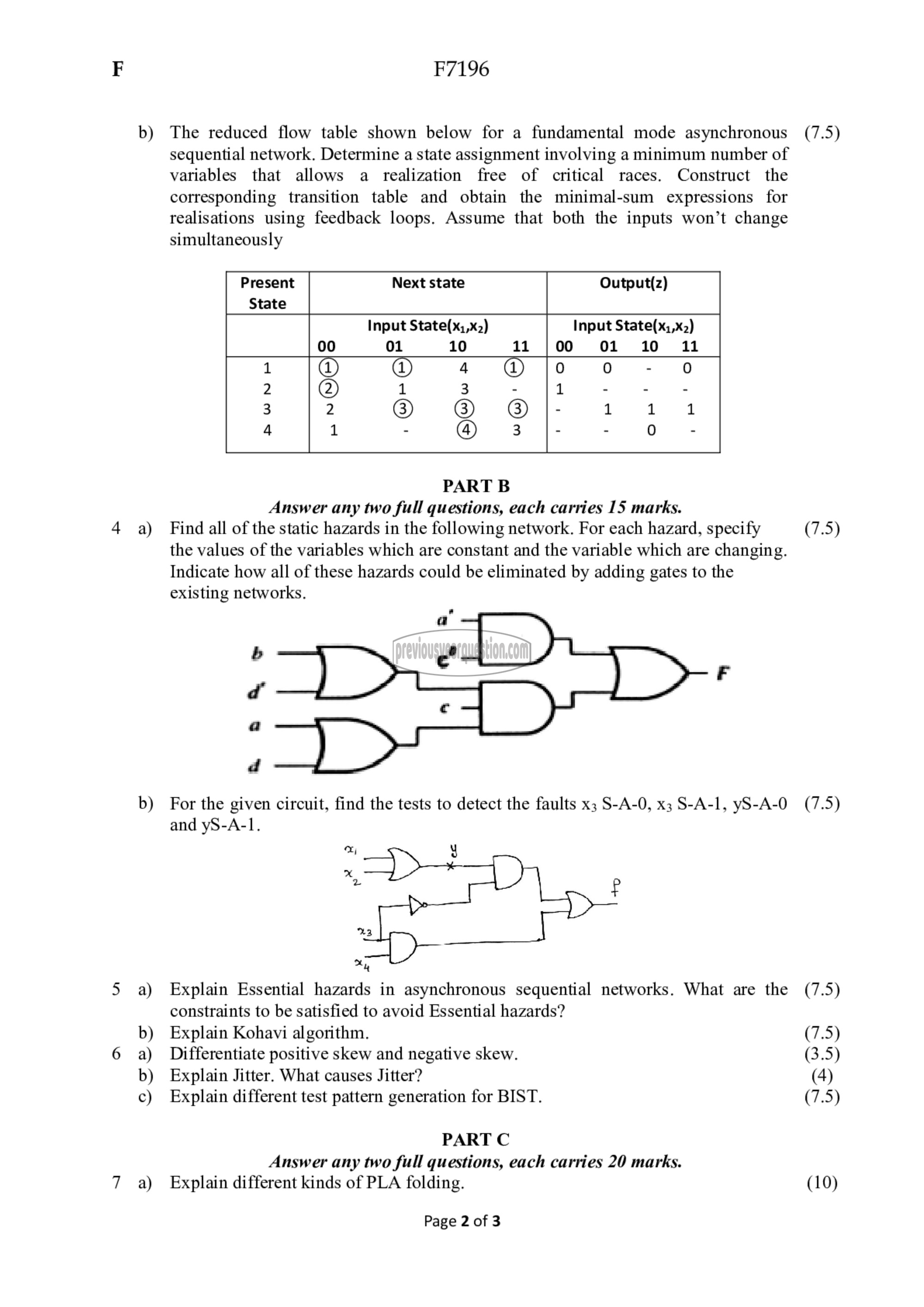APJ ABDUL KALAM TECHNOLOGICAL UNIVERSITY Previous Years Question Paper & Answer
Semester : SEMESTER 5
Subject : Digital System Design
Year : 2017
Term : DECEMBER
Scheme : 2015 Full Time
Course Code : EC 361
Page:2
b) The reduced flow table shown below for a fundamental mode asynchronous
sequential network. Determine a state assignment involving a minimum number of
variables that allows a realization free of critical races.
corresponding transition table and obtain the minimal-sum expressions for
realisations using feedback loops. Assume that both the inputs won’t change
a)
b)
F7196
simultaneously
Present [| க | state
State
Input State(x,,x2)
01 10 11
[ऋ
Input State(x,,x2)
01 10 11
Construct the
4 ر0
இ
1 3 -
ॐ டூ ॐ
@ 3
PART B
Answer any two full questions, each carries 15 marks.
Find all of the static hazards in the following network. For each hazard, specify
the values of the variables which are constant and the variable which are changing.
Indicate how all of these hazards could be eliminated by adding gates to the
existing networks.
b
For the given circuit, find the tests to detect the faults x3 S-A-0, x3 S-A-1, yS-A-0
and yS-A-1.
Explain Essential hazards in asynchronous sequential networks. What are the
constraints to be satisfied to avoid Essential hazards?
Explain Kohavi algorithm.
Differentiate positive skew and negative skew.
Explain Jitter. What causes Jitter?
Explain different test pattern generation for BIST.
PART ^
Answer any two full questions, each carries 20 marks.
Explain different kinds of PLA folding.
Page 2 of 3
(7.5)
(7.5)
(7.5)
(7.5)
(7.5)
(3.5)
(4)
(7.5)
(10)
